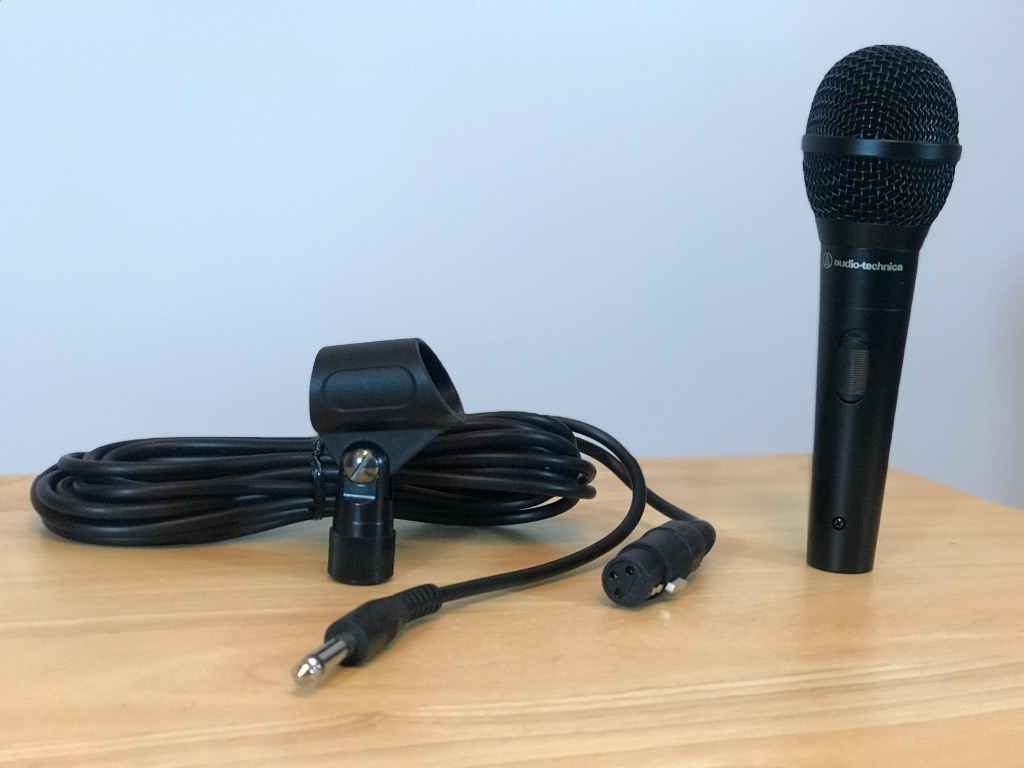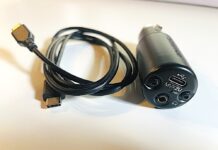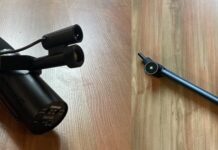 Audio Technica is a big Japanese manufacturer well known for many different Pro Audio products. Among their most popular offerings, there is the ATH series, a widespread line of studio headphones. Also, in the microphone world, the AT22020 is one of the most sold condenser models in the world, thanks to its attractive price. The ATRX series that we have here is a collection of affordable dynamic microphones. It is an update on the now discontinued ATR line. The four units available are very handy for a wide variety of users. Let’s take a look at them together to see which one will better suit your needs.
Audio Technica is a big Japanese manufacturer well known for many different Pro Audio products. Among their most popular offerings, there is the ATH series, a widespread line of studio headphones. Also, in the microphone world, the AT22020 is one of the most sold condenser models in the world, thanks to its attractive price. The ATRX series that we have here is a collection of affordable dynamic microphones. It is an update on the now discontinued ATR line. The four units available are very handy for a wide variety of users. Let’s take a look at them together to see which one will better suit your needs.
First of all, I filmed a short video presenting and discussing each of the microphones. In this video you will hear each product and how it captures voice, as well as a short demo of a guitar recording.
Dynamic type microphones
All four models of the ATRX series are of the dynamic type. This is a term that you will often see if you shop for a microphone. It refers to the method that is used to convert the air pressure (the sound) into an electric signal. After this transformation, the result is sent to either an amplifier (like in the case of a mixer and PA system combination or karaoke system) or a computer for an eventual audio to digital conversion. Once the audio has been treated or recorded, the computer can reconvert the signal to an electric impulse to be amplified by the speakers or fed to the headphone output jack.
The transformation from sound to electric signal is the origin of the term dynamic. A membrane receives the acoustic pressure and vibrates a coil that is attached to it. This coil is placed in a magnetic field provided by a permanent magnet. This is where the vibration creates an electric signal, ready to be sent. Contrary to condenser microphones, the dynamic types do not need additional power, commonly called Phantom Power. This type of construction is well suited to stage use, thanks to its durability and ruggedness. Drops, bumps and spills usually don’t affect its integrity, providing years of continuous use.

ATR1100X review
The first model in the series is the ATR1100X, the most affordable one. It has a 3 metres permanent cable attached to it that ends in a 1/8th (3.5 mm) of an inch connector, perfect for hooking up to a computer or laptop. A ¼ inch adapter is included for more versatility. Also, there is a rudimentary desk stand included in the box. This is handy for voice recordings, but be wary of desk noises that will surely be amplified by the mic. Like all the models in the ATRX line, there is an easily accessible on and off switch, which is a feature not usually found on Pro Audio equipment. It is very useful not only to mute your voice, but also to connect and disconnect your equipment without undesirable noise.
The ATR1100X offers a frequency response of 80 Hz to 12,000 Hz. This response refers to the range of sound that the microphone will be able to reproduce. The larger the interval, the more accurate the sound representation will be. The 1100’s performance is more limited than Pro Audio Standards, but it still covers the essential frequencies.

ATR1200X review
Next up is the ATR1200X. This one shares most of the same characteristics as the previous model. One of the biggest differences is that the cable is longer, this time going out to 5 meters. In addition to the same desk stand, there is also a universal microphone clip. It screws onto microphone stands, which is usually essential for stage or studio work.

ATR1300X review
The ATR1300X offers the possibility to detach the cable. Thanks to its XLR ending, it can accept any wire that has a female XLR connector. The included cable is a XLR to ¼ inch. It is a slightly strange choice, but it’s common to see this type of connector on karaoke systems. This being said, it’s a good starting point, as you can eventually buy standard XLR cables to conform to the Pro Audio standards.
The desk stand isn’t present anymore, as is the 1/8th of an inch to ¼ inch adapter (it would’ve been useless in this case). Also, the frequency response is slightly improved. The low end is extended thanks to a range going all the way down to 70 Hz.

ATR1500X review
Lastly, the ATR1500X approaches what you will find in the Pro Audio market. It’s the model that has the widest frequency response, going from 60 Hz to 15,000 Hz. This is similar to the bestselling dynamic mic. Also, it is shipped with an XLR cable. This coincides with Pro Audio standards and will enable connections with the most common audio equipment out there. It’s shipped with a universal microphone clip and a soft carrying pouch.

The ATRX series covers many situations
If you are a content creator that takes care of the audio, any of these 4 microphones will probably be an upgrade over consumer-grade equipment. A big advantage is the fact that they are unidirectional. Contrary to telephone microphones for example, they only pick up what’s in front of them. This will reduce the amount of ambient noise and will greatly improve your sound recording. Also, their frequency response is probably better than a lot of the wide-spread microphones that produce a thin or nasally result. Karaoke stars will also enjoy the ATRX line of products, especially thanks to the possibility to mute the microphone without unplugging it.
Make sure that you take note of all the connections that are available to you before you buy. If you record podcasts on your laptop or desktop, the first two models will be compatible, but in other situations, you might be limited. For those that work with audio interfaces, it is probably wiser to go with the ATR1300X or even the ATR1500X, which is built on Pro Audio standards. These last two are also more suitable for live performances.
Check out the ATRX series and all the other Audio Technica products on Best Buy’s website.



